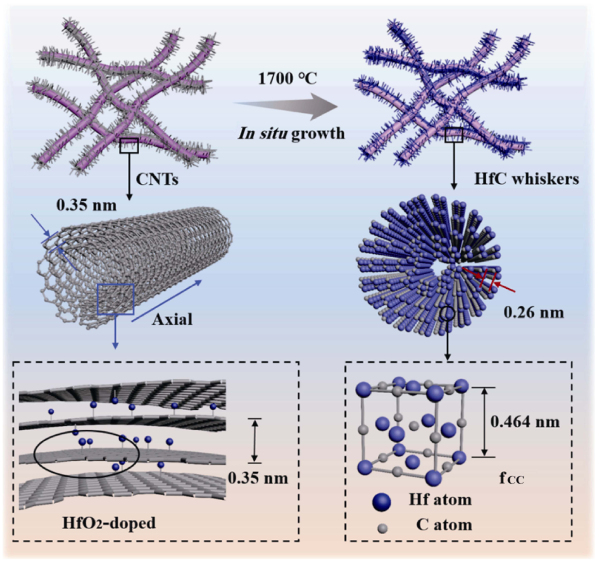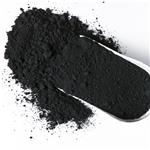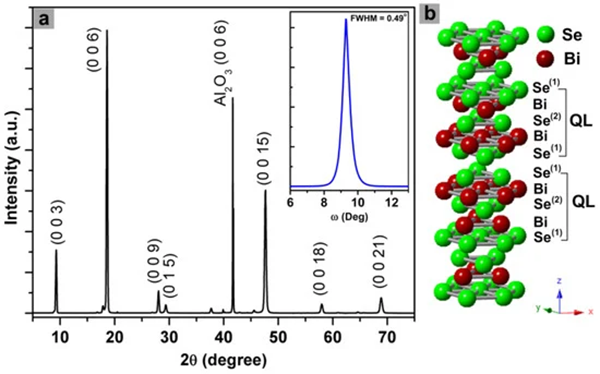What is the Structure of Hafnium Carbide Whiskers in Polymer-Derived Ceramics?
As one of the most promising ultra-high temperature ceramics, hafnium carbide(HfC) has been proven to withstand the impact of high temperatures and strong airflows and has good thermal protection capabilities. It is used as ultra-high temperature components or thermal structural coatings because of its ultra-high melting point (~3900°C ), high hardness (Vickers hardness ≈ 26.1 GPa) and excellent physical and chemical stability, it has become a component in the extremely harsh environment of aerospace.
At the same time, one-dimensional hafnium carbide has also emerged as an attractive nanomaterial, and it has proven to be an excellent compound that can enhance the properties of composites and UHTC coatings (such as mechanical, anti-oxidation and anti-ablative properties). Furthermore, due to its low work function (~3.4 eV), HfC also enriches the potential for use as a high-performance cold cathode.
Generation of HfC Whiskers
Hafnium carbide(HfC) whiskers are generated in the temperature range of 1400~1700°C. The figure below[1] shows a schematic diagram for visualizing this process. After carbon nanotubes are formed on the surface of the carbon fiber substrate, HfO or HfO2 particles will diffuse into the carbon nanotube layer and a carbothermal reduction reaction will occur. The reason why HfO2 particles are located between CNTs (d and e) is because the carbothermal reduction reaction has not yet diffused into the CNT layer and is not completely completed at 1000-1400 °C, producing HfC-HfO2 particles during the cooling process. HfC-HfO2 nanoparticles can be found on the surface of HfC whiskers, possibly due to the lack of low molecular weight gases (e.g., CO, CO2, and CH4) or O-containing polymer precursors at high temperatures.

When the temperature exceeds 1400°C, hafnium carbide whiskers form, during which the carbon nanotubes clearly act as templates. Generally speaking, the growth of CNTs is attributed to the VLS model, while hafnium carbide whiskers are grown on the basis of CNTs.
Reference
[1] Fu Y, Zhang Y, Yan H, et al. Microstructure and evolution of hafnium carbide whiskers via polymer-derived ceramics: A novel formation mechanism. Journal of Advanced Ceramics, 2023, 12(3): 578-586. doi:10.26599/JAC.2023.9220706
You may like
See also
Lastest Price from HAFNIUM CARBIDE manufacturers

US $3.00/kg2025-04-21
- CAS:
- 12069-85-1
- Min. Order:
- 1kg
- Purity:
- 0.99
- Supply Ability:
- 10000

US $1.00/KG2025-04-21
- CAS:
- 12069-85-1
- Min. Order:
- 1KG
- Purity:
- 99%
- Supply Ability:
- 10 mt


